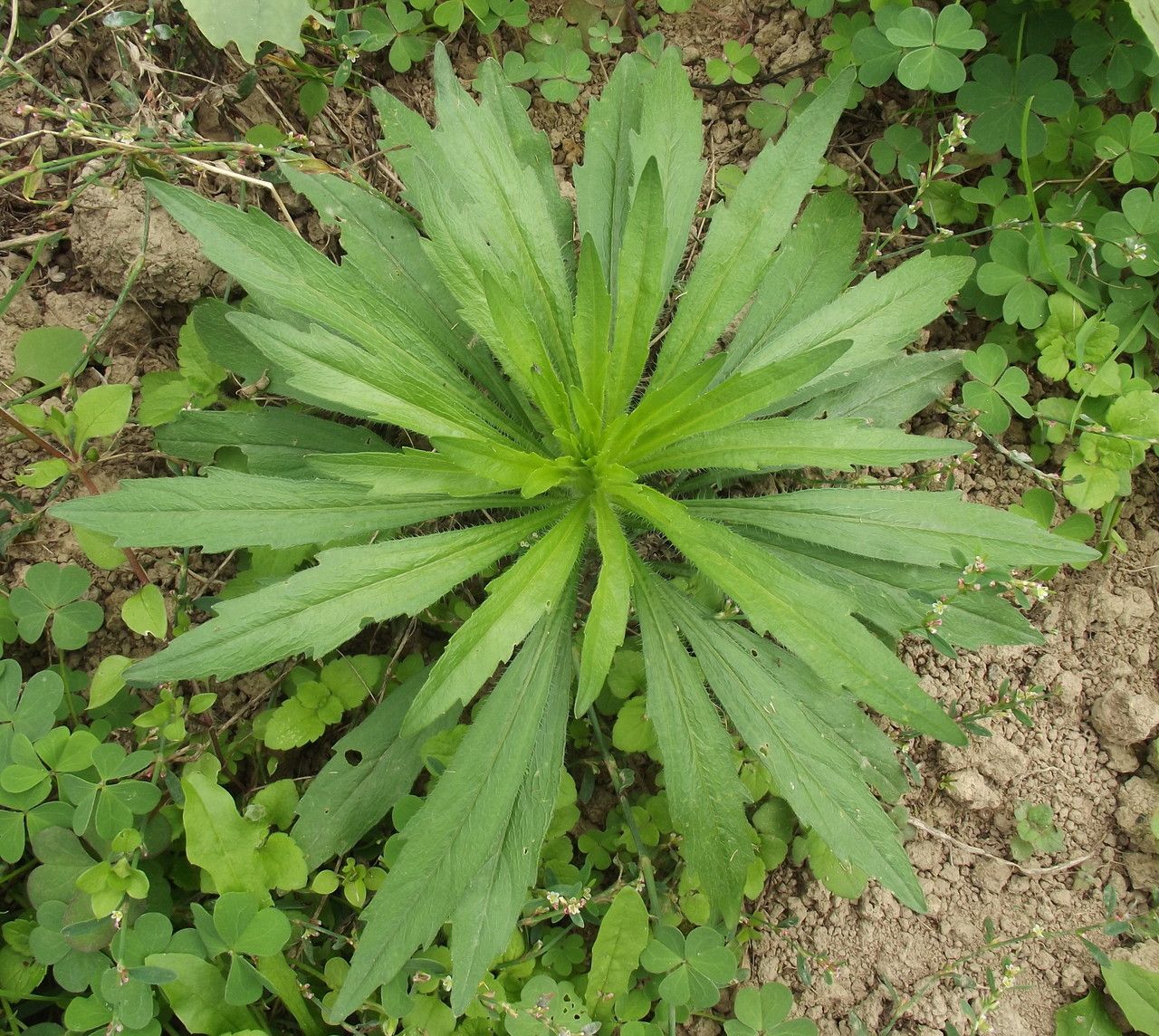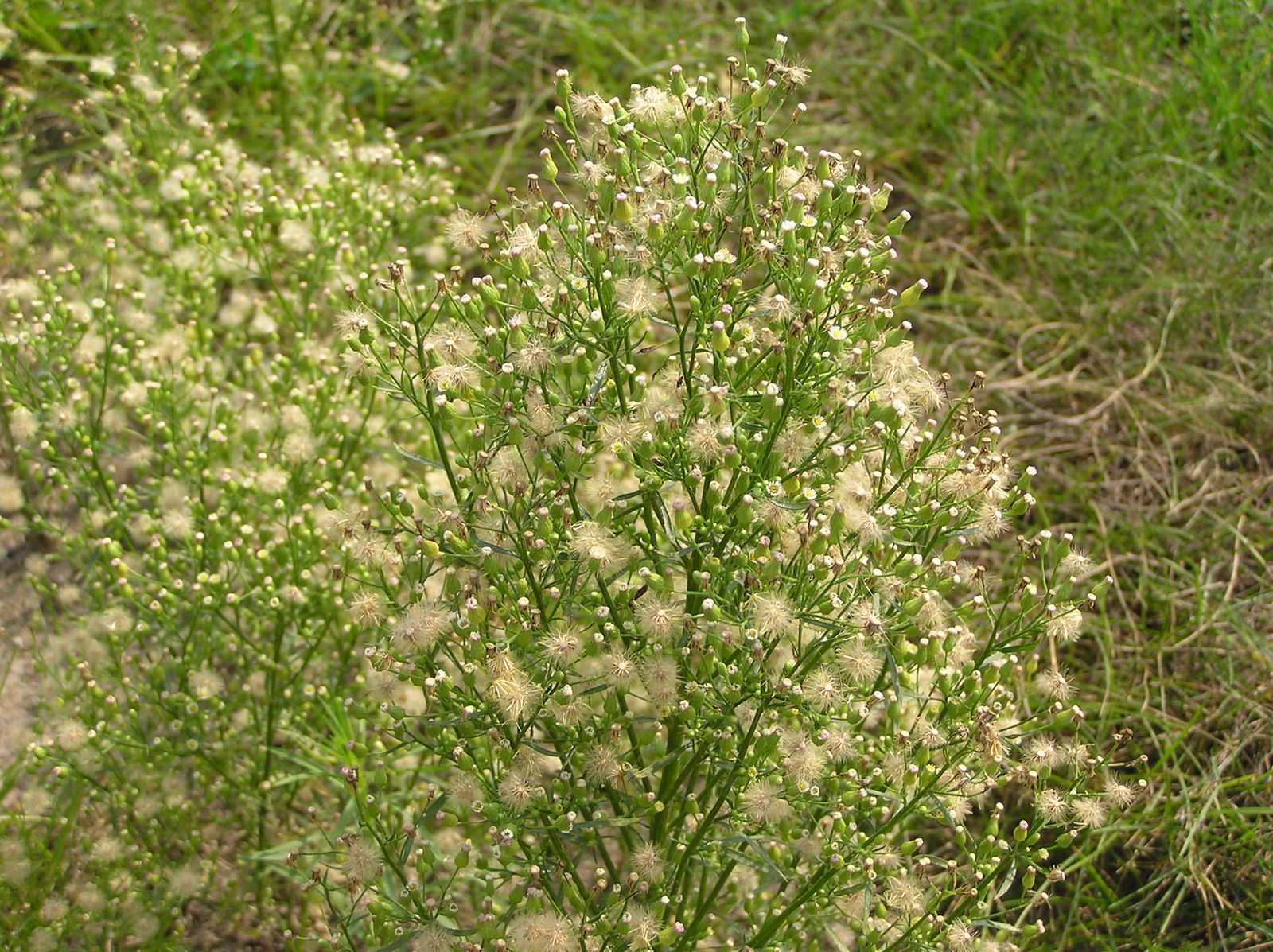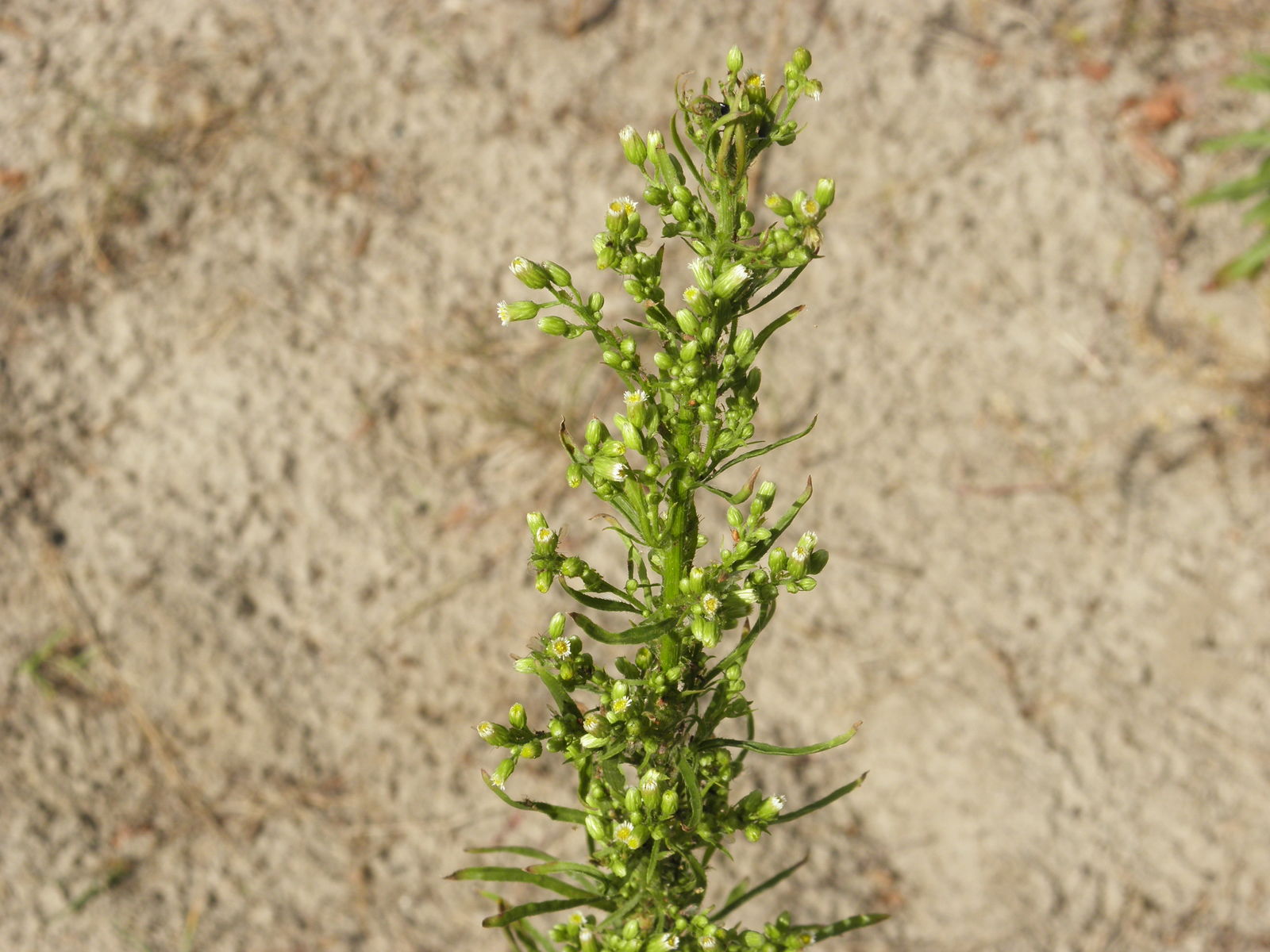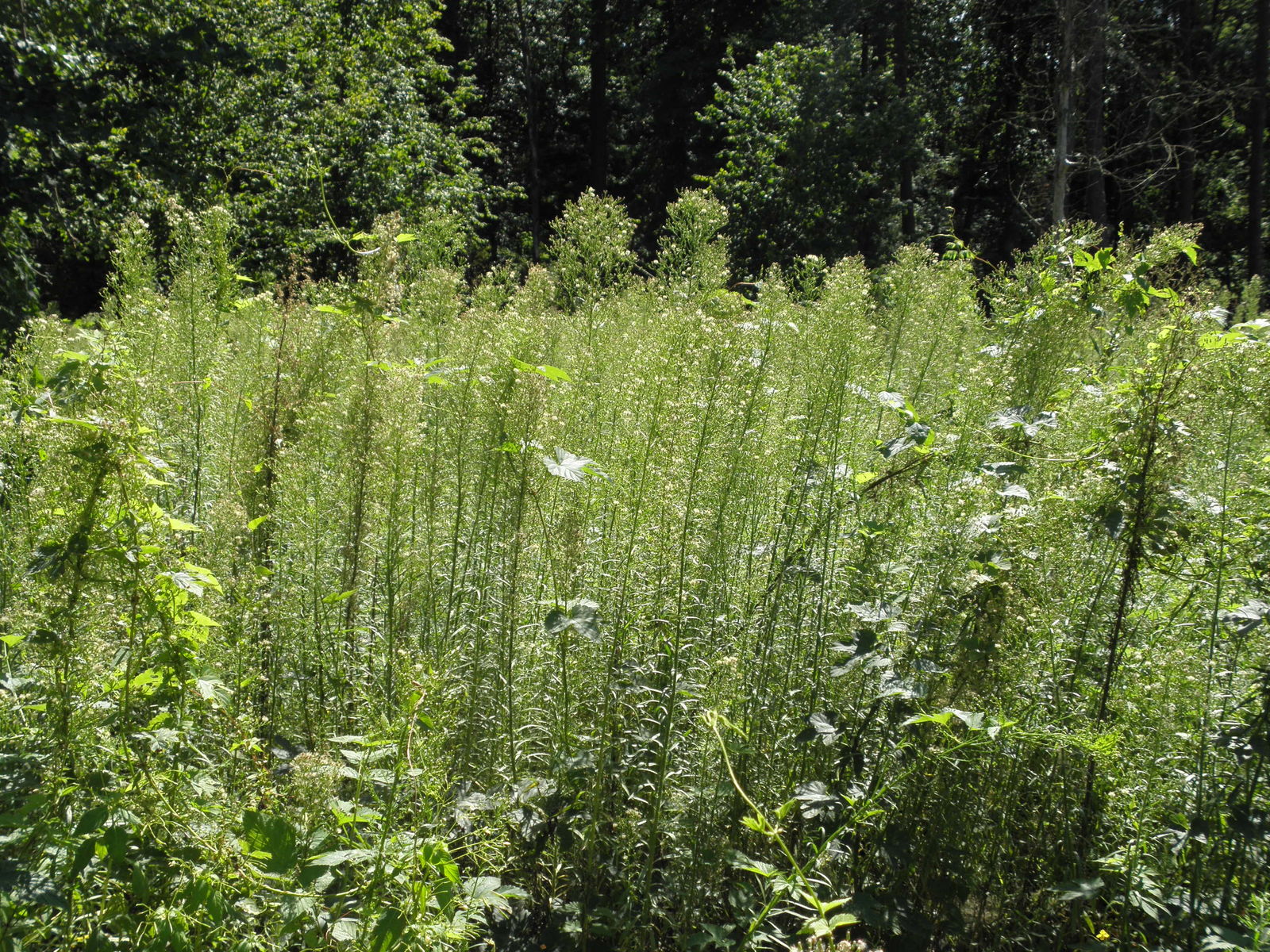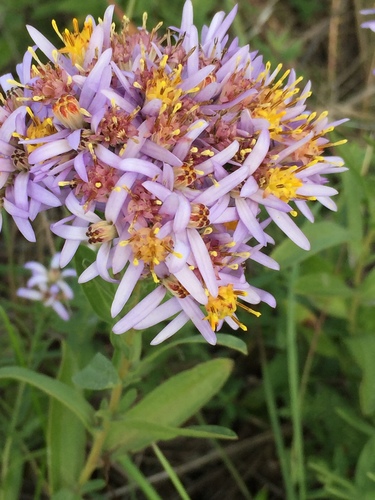Horseweed
erigeron canadensis
Also known as: ["Canadian fleabane","Bastard fleabane","Woolly fleabane"]
Overview
A widespread annual herbaceous plant native to North America, known for its daisy-like flowers and rapid growth.
Benefits & Perks
["fast growing","wildlife attractant (bees, butterflies, birds)","drought tolerant"]
Botanical Classification
| Phylum: | Magnoliophyta |
| Class: | Magnoliopsida |
| Order: | Asterales |
| Family: | Asteraceae |
| Genus: | Erigeron |
| Botanical Name: | Erigeron canadensis |
Plant Characteristics
Basic Information
- Category: Herbs & Weeds
- Suitable Location: open fields, disturbed areas, or as a ground cover in gardens
- Suitable For:
- Is Weed: No
- Allergenicity: low
Environmental Needs
- Climate: {"temperatureRange":"5–35°C"}
- Hardiness: {"zones":"3–9"}
- Misting: not necessary, as it is adapted to humid conditions
- Drainage: Fast-draining to prevent waterlogging.
- Soil Type: Well-draining, loamy soil with some organic matter.
Maintenance Level
- Maintenance Level: very low
- Toughness Level: very high
- Pruning Frequency: As needed throughout the growing season, especially after flowering.
- Pruning Intensity: Light pruning; remove only dead, diseased, or spent flower stems.
Care Details
Ideal Sunlight Coverage:
Full sun (6–8 hours of direct sunlight per day) is ideal for optimal growth and flowering.
Sunlight Tolerance Tips:
Acclimate seedlings gradually to full sun to prevent scorching. In very hot climates, provide some afternoon shade to protect from excessive heat.
Care Requirements
Care Difficulty
very easyeasy
Sunlight
full sun to partial shade
Full sun promotes flowering; avoid deep shade; rotate plants for even light exposure.
Watering
every 3–5 days during active growth, less frequently in dormant periods
Water early in the day to minimize evaporation; avoid overhead watering to prevent fungal issues; ensure soil dries slightly between waterings.
Soil
well-drained, moderately fertile soil
pH: Slightly acidic to neutral (pH 6.0–7.0).
Ensure good drainage; avoid heavy clay soils; enrich with organic matter for better growth.
Temperature
Prefers moderate temperatures between 60–75°F (15–24°C). Can tolerate a range from 50–85°F (10–29°C).
Protect from frost; provide shade in extreme heat; maintain moderate temperatures for best growth.
Fertilizing
rarely required, if used then every 6–8 weeks during spring and summer
Fertilize lightly to avoid excessive foliage growth at the expense of flowers; stop fertilizing in late summer to prepare for dormancy.
Propagation
Methods
Stem cuttings or seed propagation. Seeds are the most common and easiest method.
Step-by-Step Propagation Guide
- Prepare medium.
- Sow seeds or take cuttings.
- Maintain moisture and warmth.
- Transplant once established.
Best Time: Spring or early summer when the plant is actively growing.
Environment
Warm (70–75°F or 21–24°C), humid, and bright but indirect light.
Medium
Well-draining potting mix or seed-starting medium.
Hormone
Not necessary for seeds; optional for stem cuttings to encourage rooting.
Timeline
Seeds germinate in 1–3 weeks; stem cuttings root in 2–4 weeks.
Tools Needed
Seed trays, pots, well-draining soil, water spray bottle, optional rooting hormone.
Quick Tips
Keep soil consistently moist; provide bottom heat for faster germination; thin seedlings as needed.
Pruning & Repotting
Pruning Guide
Method
Snip off dead or faded flowers just above a leaf node or healthy bud.
Pruning Plan
Minimal pruning is required. Focus on removing dead or damaged stems and spent flowers to encourage continuous blooming.
Tools
Hand pruners or sharp scissors.
Checklist
Use clean tools; prune dead or damaged stems; deadhead spent flowers; avoid over-pruning.
Repotting Guide
Best Season
Early spring before new growth begins.
Pot Size
One size larger pot (e.g., from 4-inch to 6-inch pot).
Method
Gently remove the plant, trim any circling roots, place in a slightly larger pot with fresh soil, and water thoroughly.
Suggestions
Repot only if the plant becomes root-bound or outgrows its container. Erigeron canadensis is often grown as an annual or self-seeding plant.
Checklist
Choose appropriate pot size; use fresh, well-draining soil; handle roots carefully; water after repotting.
Advanced Care Tips
Watering Mastery
Watering Checklist
Check soil moisture before watering; water early in the day; avoid wetting foliage; ensure proper drainage.
How to Apply Water Properly
Apply water directly to the soil at the base of the plant, ensuring even moisture distribution to the root zone. Water until the soil is moist but not saturated, allowing excess to drain away.
Watering Schedule Tips
Water lightly and frequently during germination and early growth, then reduce frequency as the plant becomes established. In hot, dry conditions, increase watering to maintain soil moisture without waterlogging.
Soil Improvement
Add perlite or sand for drainage; incorporate compost for fertility; ensure soil is loose and airy.
Temperature Stress Management
Signs of Temperature Issues
Wilting, yellowing leaves, or stunted growth indicate temperature stress. Bud drop or failure to flower may also occur.
Cold Stress
Prolonged exposure to temperatures below 50°F (10°C) can slow growth and may cause leaf damage or dieback.
Solution: Provide protection from frost or cold drafts. In containers, move plants to a sheltered location during cold spells.
Hot Stress
Excessive heat above 85°F (29°C) can lead to wilting, leaf scorch, or reduced flowering.
Solution: Increase watering frequency, provide afternoon shade, and ensure good air circulation to mitigate heat stress.
Fertilizing Guide
Fertilizing Checklist
Use balanced fertilizer; dilute properly; fertilize during growing season only; avoid over-fertilization.
Fertilizing Method
Use a balanced, water-soluble fertilizer diluted to half strength every 4–6 weeks during the growing season (spring to early fall). Avoid fertilizing in winter.
Common Problems & Solutions
Toxicity Warning
Cats
Non-toxicErigeron canadensis is not considered toxic to cats. The plant does not contain known compounds that are harmful to felines.
⚡ Toxic If:
if eaten
Dogs
Non-toxicErigeron canadensis is not considered toxic to dogs. The plant does not contain known compounds that are harmful to canines.
⚡ Toxic If:
if eaten
Humans
Slightly ToxicErigeron canadensis, commonly known as Canadian fleabane, is generally considered non-toxic to humans. However, ingestion of the seeds may cause mild gastrointestinal discomfort due to their fibrous nature. No significant physiological impact has been documented.
⚠️ Symptoms:
🌿 Toxic Parts:
⚡ Toxic If:
if eaten
Frequently Asked Questions
Q: Is Horseweed invasive?
A: Yes, it is considered an invasive weed in many regions due to its rapid spread and adaptability.
Q: Does Horseweed have any medicinal uses?
A: Historically, it has been used in folk medicine for its diuretic and astringent properties, though modern use is limited.
Q: How can I control Horseweed in my garden?
A: Hand-pulling, mowing, or using selective herbicides are effective methods for control.
Quick Reference
| Family: | Asteraceae |
| Care: | very easy |
| Light: | full sun to partial shade |
| Water: | every 3–5 days during active |
Get Expert Care Tips
Download the Plantious app for personalized care reminders and plant identification!
Google Play App Store
